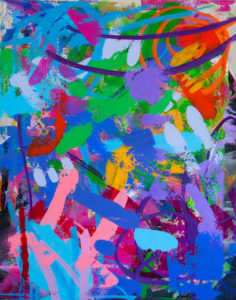Designing Forward
By Jake Gloth
With the end of London’s Design Week comes the close of an innovative summer for the creators and creatives of the world. The designers focused on connectivity and sustainability in an effort to unite and preserve a distanced world.
London’s festival saw new leaps in architecture, comfort, and art. In Milan, the return of Salone del Mobile sparked an opportunity for the forgotten designers of the pandemic. In Austria, Vienna Design Week delighted and excited with new sustainable ideas.
London’s design event was held from Sept. 18 to 26 with a variety of art and architectural pieces being showcased throughout the city. Inside the Fortnum & Mason atrium, spectators were dazzled by The Dancing Bee Hives. This installation by Mamou-mani is comprised of drooping white cylinders and is meant to demonstrate a need to allow nature back into our civilized spaces.

The project is made primarily from fermented sugar—meaning it is fully compostable and recyclable. Each component is available for purchase with 25% of the sale going to Bees for Development—a UK based charity focused on protecting the country’s bee population.
In the Raphael Court at the Victoria & Albert Museum, audiences were confronted by a mesmerizing mixed reality art adventure. Tin Drum’s Medusa is an ever warping, virtual aurora borealis, which must be viewed through an augmented reality headset. The piece is meant to create a unified human journey with a new kind of interactivity and intimacy.

Salone di Mobile’s “The Lost Graduation” showcase offered a sanctuary for the forgotten wonders by last year’s young designers. From Sept. 5 to 10, the bright and youthful took centre stage to see what they could offer the world. Their designs illustrated a desire among this new generation to create a greener and more sustainable world by starting with the little things in everyday life.
Amelie Graf—a former master’s student at UDK Berlin—developed edible food packaging to reduced plastic waste. This “Meal Bag” is primarily composed of corn starch and can be eaten or dissolved in hot water after use. The product’s lightweight and durable structure makes it a formidable replacement to the typical plastic used in food containment.

Another student from UDK Berlin decided to address the food inside the container. Kimia Amir-Moazami’s Vorkoster is a lid for decomposing foods. The Vorkoster changes colours when the food begins to spoil so that the consumer doesn’t have to guess their meal’s quality through unreliable best-by dates. Kimia believes this product will help reduce food waste by eliminating misinformed disposals.
A master’s student from NABA Nuovoa Accademia di Belle Arti decided to confront microplastic waste in the Earth’s oceans. Matteo Brasili developed a small filter that can be attached to fishing and commercial boats for the collection of microplastics in the water.

Removing extraneous rubbish is a concern of Luis Fernando Barrios, an industrial design student from Tecnológico de Monterrey. He is primarily concerned with the immense amount of waste generated by the textile industry through screen printing. To combat this, he discovered a way to use the refuse in clothing. From this material, he was able to design the No Littering unisex sweatshirt.

A pair of students from Tecnológico de Monterrey have developed a greener design for hypodermic needles. Ithzel Cerón and Daniel López created this new vaccination device in midst of the pandemic after seeing the intense and wasteful process that goes into incinerating medical refuse. Their device—Helix— is a syringe made solely from a heat-curable type of silicone, which helps reduce the infrastructure needed to facilitate the device’s incineration.

Like López and Cerón, Benjamin Bischel is trying to make the medical industry more sustainable. This masters student from CAL École cantonale d’arte de Lausanne has created biodegradable hospital wear in an effort to reduce medical waste while maintaining patient and staff safety.

In Vienna, new designs and ideas were showcased from Sept. 24 to Oct. 3. One creator inspired excitement with her sustainable cooking ware. Viennese designer Barbara Gollackner and Austrian Chef Martin Kilga joined forces to create Wasteware—a series of kitchen products made entirely of leftover food. Gollackner and Kilga used cooking waste such as pork skins and old bread to 3D print cutlery, bowls, and plates.

While these design weeks may be on their way out, their innovations have only just begun to delight. The creatives have shown there is a green, gregarious future on the other side of the pandemic.
If you’d like to learn more about the projects and art features at London Design Week, Salone di Mobile, or Vienna Design week—you may use the links under the preceding words.




